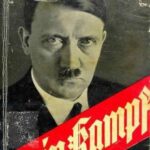On March 24, 2005, I visited the Museum of Tolerance to see Renee Firestone speak. Ms. Firestone is a Holocaust survivor who was forced to Auschwitz when she was sixteen years old, and was subsequently liberated from the internment/death camp at the age of twenty.
Firestone grew up in Hungary, and lived what she considers to have been a financially comfortable life. She explains that before Hitler and the Nazis rounded her and her family up, there were rumors of mass graves of Jews. However, Firestone continues, “Nobody really believed this was actually happening.” The people in Firestone’s town hoped that the rumors would go away, or turn out to be false. They believed that Hitler’s rule would only last for a very short while, and that in the meantime, life should simply carry on as normal. When Firestone questioned her father about the stories, he maintained that they could not possibly be accurate and encouraged her not to worry.
Slowly, however, things grew more and more difficult for Hungarian Jews. Anti-Semitic lies about Jews and political dominance (when they were less than one percent of the population) spread throughout the community. Prejudice and discrimination followed. For instance, Jewish children were no longer allowed to attend school with non-Jewish children. Jewish parents had to teach their children clandestinely. A more personal example of anti-Semitic discrimination hit the Firestone family when Renee Firestone’s father’s business was taken away from him. All that he had worked so hard for was now gone.
Shortly afterwards, in 1941, Renee Firestone and her family were forced onto a train, where they and thousands of other Hungarian Jews were shipped like animals to Auschwitz. Nazis informed the Jews that they were needed in factories to build weapons for Hitler. The Jews were promised financial compensation and food, and were given 24 hours to pack one bag of belongings. There was barely standing room for the people who were crammed into the cars. In the corner of each train car was a bucket, which served as the only available toilets. For three days, they traveled standing, without food or water.
Once in Auschwitz, the Jews were instructed to leave their bags in the train cars, and were promised that their belongings would be delivered to their “living quarters.” This, of course, never happened, and the Jews were left in geographical isolation with virtually nothing of their own.
The Nazis then separated the males from the females. Next, young men were divided from boys and elderly men. Young women were separated from girls and elderly women. The elderly and the children were sent straight to the gas chambers.
Firestone explains that the Nazis instructed women to file into a single line, then stripped the women of their clothing and gave them a gray “uniform.” She recalls the male guards glaring at the naked bodies of all the Jewish women. After the women put on their “new” clothes, their heads were shaved. As they exited the building, a Nazi soldier dipped a paintbrush into a can of yellow paint, and spread it from the front of their hair-lining up, across their heads, and down toward their backs. This created mass confusion, for nobody recognized one another without their hair.
Firestone and her sister managed to remain close to each other for a while. However, one day, Firestone’s sister disappeared, and she never knew what happened to her until decades later, when she was working with Steven Spielberg on a film about the Holocaust survivors. At that time, she learned that her sister had been taken and tortured in one of the Nazi “medical-experiment hospitals” by the now infamous “doctor,” Josef Mengele. After Firestone’s sister endured long torture, she was gassed to death.
Firestone’s story, though deeply personal, helps us understand more broadly ways in which race, class, and gender fit together and form social mechanisms by which oppressions are carried out. First, anti-Semitism brought financially “well-off” families to their knees. Once Jews’ resources were stolen from them, and once they were systematically denied jobs and material goods due to racism in their towns, they became poor and destitute. Next, poverty led to the Jews’ belief of the Nazis’ lies… that they were going to work at military factories, where they would find shelter and be financially compensated. Finally, the women were sexually demoralized, raped, and mocked for their appearances.
The horrors of Nazi torture affected both men and women. Though it is important to understand how gender, race, and class fit into the Holocaust, it is equally prudent to note that it was not sexism that spawned the mass murder of the holocaust. Nor was it classism. It was racism-anti-Semitism-that was the foundation of such a noxious historical event. Classism became a vehicle through which racism and murder was more easily carried out. Sexism added the extra torture of rape to the women, once imprisoned.
Before attending Firestone’s talk, I never knew that the women were “painted” upon arriving in Auschwitz, but this is a significant detail regarding the treatment of women because the paint worked to further dehumanize and objectify them. Renee Firestone’s experience adds a much-needed component of individual survivors’ perspectives. There is something nuanced about learning of the Holocaust from a survivor herself, rather than reading about it in a typically cold textbook with limited foci.

